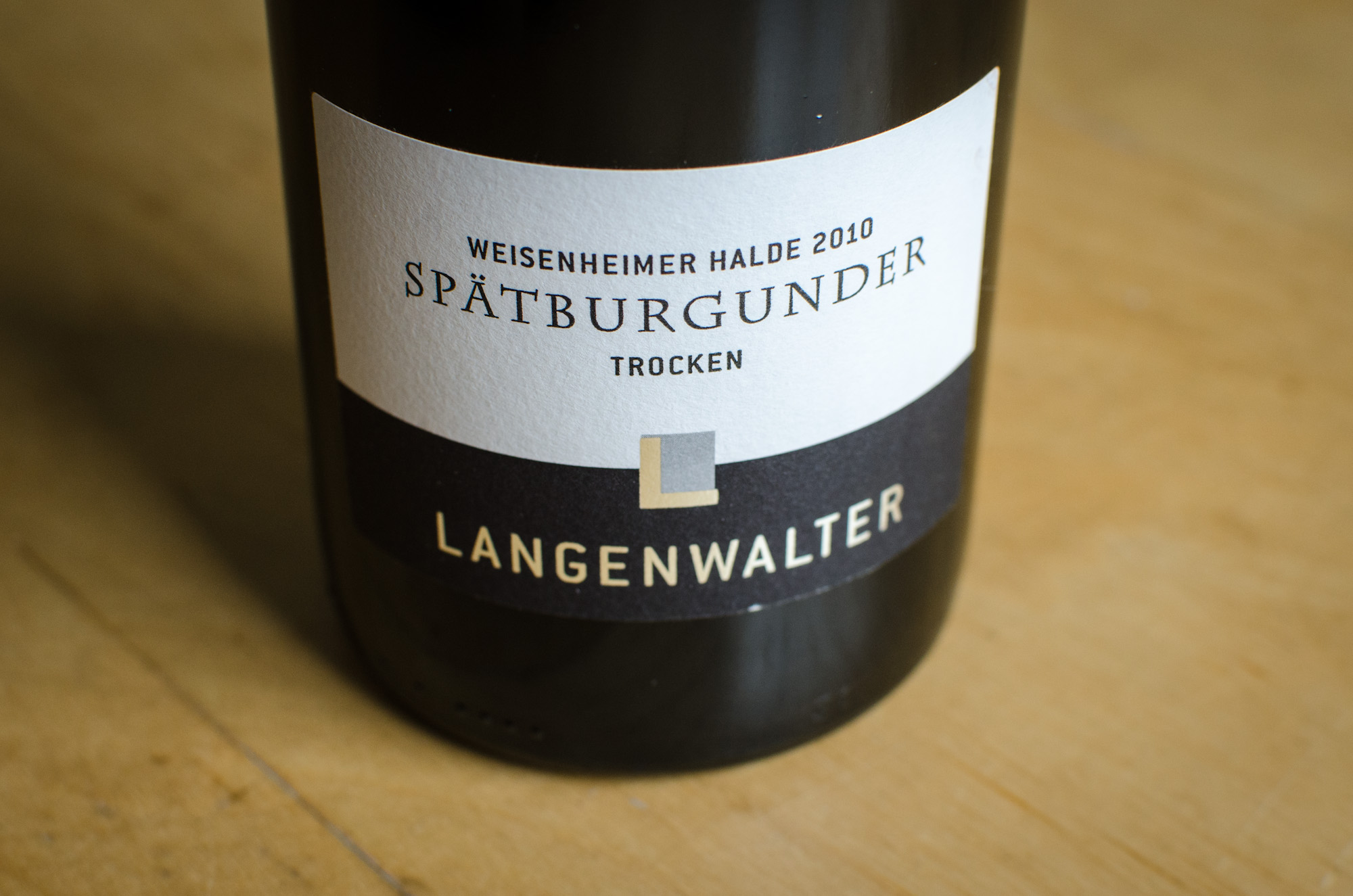Weingut Langenwalter, Weisenheimer Halde, Spätburgunder trocken, 2010
By now word has got around that there is German red wine. I mean, it has, right? If it hasn't, can you please just nod politely and leave me the illusion that after shouting about it for a few years we have at least got that message out? So, as we all know by now that there is German red wine, let's deal with the fact that there is quite a lot of it these days. Germany, for instance, is the world's third largest producer of Pinot Noir - or Spätburgunder as it is known there and as you can see on the label below.

At the Langenwalter winery they don't just make some of this - almost half the grapes grown in the Pfalz vineyards are red, actually. This includes Portugieser, Dornfelder and Cabernet Sauvignin. So you'd think that with that much quantity around and a few hundred years of family history the Langenwalters will know something about making good red wine.
To relieve what by now must be unbearable tension let me cut to the chase: they do. What you are not looking at though is a heavy and substantially oaked red - instead it is the lighter, fresher style of Pinot Noir that Germany does very well.
The bouquet is not in-your-face fruity despite its aromas of ripe (almost marinated) cherries; the overall impression is more of earthy woodland with musty, yeasty aromas of undergrowth, vegetable, mushroom and herbs, to which the fruit gives nice balance. Round off with a touch of leather and tyre. Pleasingly the Langenwalter tastes quite similar, with earthy aromas and fresh red berries. Herbal aromas come out more in a decent finish that leaves you with an almond touch of bitterness on tongue. With freshness and nicely integrated tannin and without heavy oak aromas this makes for a very solid Pinot wine that was pleasing as food companion with mushroom risotto as it did not shout for attention but rather complemented the food.
